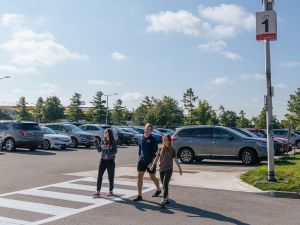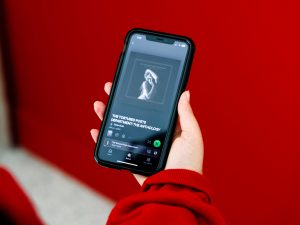 Professor Fiona Blaikie in Brock’s Faculty of Education has published a new edited collection exploring the ways young people construct their visual and cultural identities.
Professor Fiona Blaikie in Brock’s Faculty of Education has published a new edited collection exploring the ways young people construct their visual and cultural identities. A newly published collection by Brock Professor Fiona Blaikie brings together international experts to examine the ways young people construct their visual and cultural identities.
With authors from Canada, India, South Africa and beyond, Visual and Cultural Identity Constructs of Global Youth and Young Adults: Situated, Embodied and Performed Ways of Being, Engaging and Belonging offers international scholarship and insights into how young people engage with the world and establish a sense of belonging, or not, in different settings.
Five of the chapters were contributed by Brock researchers and graduate students, including Blaikie, Professor of Visual Art Education; Shauna Pomerantz, Associate Professor of Child and Youth Studies; Kevin Gosine, Associate Professor of Sociology; and Julianne Burgess and Giang Nguyen Hoang Le, doctoral candidates in the PhD in Educational Studies program.
The collection was born out of Blaikie’s work on visual identity and the ways identity can be porous and malleable.
“I’m interested in different cultural perspectives on youth and young adults and how they create and perform their lives in different ways,” she said. “We go through these shifting incarnations of ourselves and that’s what I’m interested in.”
One chapter in the collection explores the ways young women in South India, for example, shift identities in different settings by wearing more traditional clothing at home and Western clothing at university.
Place, gender, sexuality, race, culture and class all play significant roles in the construction of visual and cultural identities, Blaikie said.
Drawing on his own childhood experiences as the biracial son of a single mother in a racialized Toronto neighbourhood, Gosine, in his contribution to the collection, examines the importance of building community belonging to support marginalized youth.
For his chapter, Nguyen Hoang Le reflects on his experiences growing up as a queer boy in a traditional urban upper-class Vietnamese family and a society shaped by class hierarchies and binaried gender roles. With his family, he behaved and dressed to perform the identity of a young heterosexual male.
Burgess describes in the book her time working with three young adult refugees in an adult settlement English class to explore resettlement experiences through poetic inquiry, an artistic and experimental research method. Together, they explored the everyday experiences of young adult newcomers, and the ways belongings are felt and performed.
How the expression of cultural and visual identities is framed by popular culture and, increasingly, social media, was the focus of Pomerantz’s contribution. Pomerantz and her daughter, Miriam Field, take a closer look at social media in their chapter on girls’ body images and digital content creation. Pomerantz and Field collected their data by posting dance videos together on the social media platform TikTok.
Blaikie said her study included in the book is framed by art-led scholarship and ‘worlding.’ It offers visual and narrative vignettes of Grade 11 art students’ expressions of being, becoming and belonging through high school subcultures, social media, popular culture and social theory on the body and clothing.
“This collection brings together the ideas of key global scholars focusing on the lives of youth and young adults, examining their visual and cultural identity constructs and the impacts of place, gender, sexuality, race, culture and class on these identities,” Blaikie said. “The overarching emphasis of the collection is on youth and young adults’ strategies for engaging in and with the world, becoming a someone and issues of belonging, in settings that include a juvenile arbitration program, an artist community, high schools, universities, families and social media.”
In bringing together international interdisciplinary scholarship, the collection has global impact across cultural and media studies, education, anthropology, sociology, gender studies, child and youth studies, visual culture and communication studies, she said.
Blaikie and two contributors will be discussing the collection during an Art Education Research Institute virtual symposium Friday, Sept. 24 at 3 p.m. Blaikie is the Program Director of the Art Education Research Institute 2021 Seminar Series, a global network of art education scholars.









